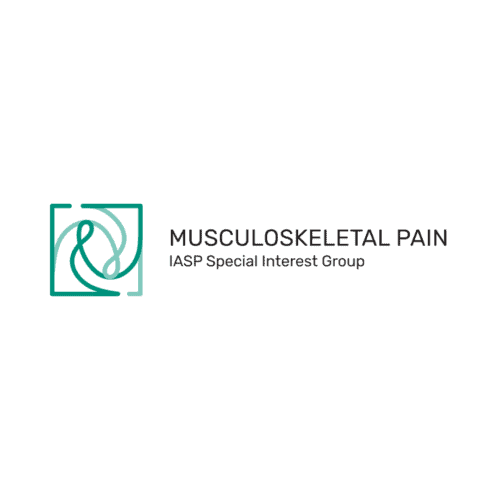Osteoarthritis as a major clinical problem
The most common treatments of pain in osteoarthritis are: 1) exercise-based therapy in combination with pain education (and weight loss if needed), 2) nonsteroidal anti-inflammatory drugs, and 3) arthroplasty surgery. Patients with osteoarthritis gain approx. 25% pain reduction from long-term treatments (weeks) of exercise-based therapy in combination with pain education and nonsteroidal anti-inflammatory drugs, and 10-20% of patients experience chronic postoperative pain following arthroplasty surgery.
The global burden of disease studies ranks osteoarthritis as the third most prevalent musculoskeletal pain condition. Obesity and increasing age are associated with a higher risk of developing osteoarthritis, and therefore, the prevalence of osteoarthritis is likely to increase in the future. Obesity does lead to an increased prevalence of OA in weight-bearing and non-weight-bearing joints (e.g., in the hands) [9], and it is speculated that this is due to an underlying inflammatory process, which occurs due to obesity. Data from Australia are troubling since Australia faces an unsustainable joint replacement burden by 2030 with a significant healthcare budget and health workforce implications [1], which emphasize the major clinical burden of osteoarthritis on the healthcare sector.
Osteoarthritis as a localized pain problem
Osteoarthritis is characterized by cartilage degeneration, joint stiffness, and pain, but interestingly, there are poor associations between the radiological assessment of cartilage degeneration and the clinical pain reported by the patients. Cartilage is minimally innervated by nociceptors, and therefore, the breakdown is not necessarily associated with pain. In contrast, the synovium membrane, Hoffa’s fat pad, and the subchondral bone are highly innervated by nociceptors, and inflammation of these structures (e.g., synovitis) is associated to clinical pain [6]. Arthroplasty surgery is likely a good treatment for patients only experiencing localized osteoarthritic pain problems, and approx. 80% of patients will experience major pain improvements and be satisfied with arthroplasty surgery [8].
Osteoarthritis as a widespread pain problem
Referred muscle pain is common in the later stages of osteoarthritis, and widespread pressure hyperalgesia is often reported when comparing patients with osteoarthritis to healthy, pain-free individuals [3]. Pre-clinical evidence suggests that widespread hyperalgesia is due to central sensitization of the nervous system, and clinical data suggest that the extent of widespread hyperalgesia is associated with higher clinical pain [2]. Human proxy assessments of central sensitization, such as temporal summation of pain, are often facilitated in patients with higher osteoarthritic pain, and studies suggest that the facilitation of widespread hyperalgesia and temporal summation of pain are associated with a poor response to standard pain therapy for pain in osteoarthritis.
Osteoarthritis as a complex multi-comorbid pain problem
Traditionally, osteoarthritis is considered a non-inflammatory type of arthritis (e.g., compared with rheumatoid arthritis). However, there are many examples of inflammatory processes which are present in osteoarthritis both locally at the joint (e.g. synovitis) and systematically. A study of more than 400 patients with different stages of osteoarthritis found that acute and chronic inflammation is present in subsets of patients [10], which channels the traditional belief that osteoarthritis is a non-inflammatory disease.
Obesity is prevalent in patients with osteoarthritis and is linked to an underlying inflammatory process, which might elevate clinical pain. Similarly, obesity is linked with a higher risk of type 2 diabetes, which again is coupled with increased systematic inflammation, synovitis, and higher clinical pain [5].
Biomechanics are often discussed in relation to osteoarthritis, but the association between biomechanics and pain in osteoarthritis is limited. Joint degeneration can change gait functions such as speed, knee joint loading, and alignment, which can also vary with the pain intensity. Moreover, gait patterns with increased load in the knee joint or varus thrust are related to increased pain. Currently, studies on pain and biomechanics are limited to mostly cross-sectional data, and longitudinal studies are needed to study cause and effect [7].
Poor quality of sleep is prevalent among patients with chronic pain, including patients with osteoarthritis, and is associated with higher levels of depression, anxiety, and pain catastrophizing, which are all factors associated with higher clinical pain [4].
The levels of pain catastrophizing, anxiety, and depression are elevated in a subset of patients with osteoarthritis and are associated with increased clinical pain, and patient education is, therefore, a cornerstone of the treatment of osteoarthritis. The 2019 Osteoarthritis Research Society International’s (OARSI) non-surgical guidelines conditionally recommend duloxetine (an antidepressant classified as a serotonin and norepinephrine reuptake inhibitor) for patients with osteoarthritis and widespread pain and/or depression. Several large randomized controlled trials on duloxetine have been published since the release of the 2019 OARSI guidelines, and the current evidence suggests that duloxetine might be beneficial for a subset of patients but that the side effects of duloxetine should be monitored closely.
Conclusion
Osteoarthritis is prevalent, and the prevalence is likely to increase in the future due to a global increase in obesity and due to an increasing global population age. The current recommended treatment options are insufficient, which in combination with a rapid increase in prevalence, will lead to osteoarthritis becoming a major clinical issue in the future. Pain in osteoarthritis can be viewed as a localized pain problem, but more recent evidence demonstrates that pain in osteoarthritis is likely to impact several systems, and co-morbidities to osteoarthritis are likely to worsen this. Studies exploring how the underlying mechanisms of pain in osteoarthritis (e.g., inflammation, psychological factors, the impact of comorbidities, etc.) are linked to treatment response and the development of new treatment options targeting these mechanisms is recommended to advance the field.
References
- Ackerman IN, Bohensky MA, Zomer E, et al. The projected burden of primary total knee and hip replacement for osteoarthritis in Australia to the year 2030. BMC Musculoskelet Disord;20:90–99 2019.
- Arendt-Nielsen L, Egsgaard LL, Petersen KK, et al. A mechanism-based pain sensitivity index to characterize knee osteoarthritis patients with different disease stages and pain levels. Eur J Pain;19:1406–1417 2015.
- Arendt-Nielsen L, Skou ST, Nielsen TA, et al. Altered Central Sensitization and Pain Modulation in the CNS in Chronic Joint Pain. Curr Osteoporos Rep;13:225–234 2015.
- Edwards RR, Cahalan C, Calahan C, et al. Pain, catastrophizing, and depression in the rheumatic diseases. Nat Rev Rheumatol;7:216–224 2011.
- Eitner A, Pester J, Vogel F, et al. Pain sensation in human osteoarthritic knee joints is strongly enhanced by diabetes mellitus. Pain;158:1743–1753 2017.
- Felson DT. The sources of pain in knee osteoarthritis. Curr Opin Rheumatol;17:624–628 2005.
- Hutchison L, Grayson J, Hiller C, et al. Relationship Between Knee Biomechanics and Pain in People With Knee Osteoarthritis: A Systematic Review and Meta-Analysis. Arthritis Care Res (Hoboken) 2022.
- Nakano N, Shoman H, Olavarria F, et al. Why are patients dissatisfied following a total knee replacement? A systematic review. Int Orthop;44:1971–2007 2020.
- Reyes C, Leyland KM, Peat G, et al. Association Between Overweight and Obesity and Risk of Clinically Diagnosed Knee, Hip, and Hand Osteoarthritis: A Population-Based Cohort Study. Arthritis Rheumatol;68:1869–1875 2016.
- Siebuhr AS, Petersen KK, Arendt-Nielsen L, et al. Identification and characterisation of osteoarthritis patients with inflammation-derived tissue turnover. Osteoarthr Cartil;22:44–50 2014.



